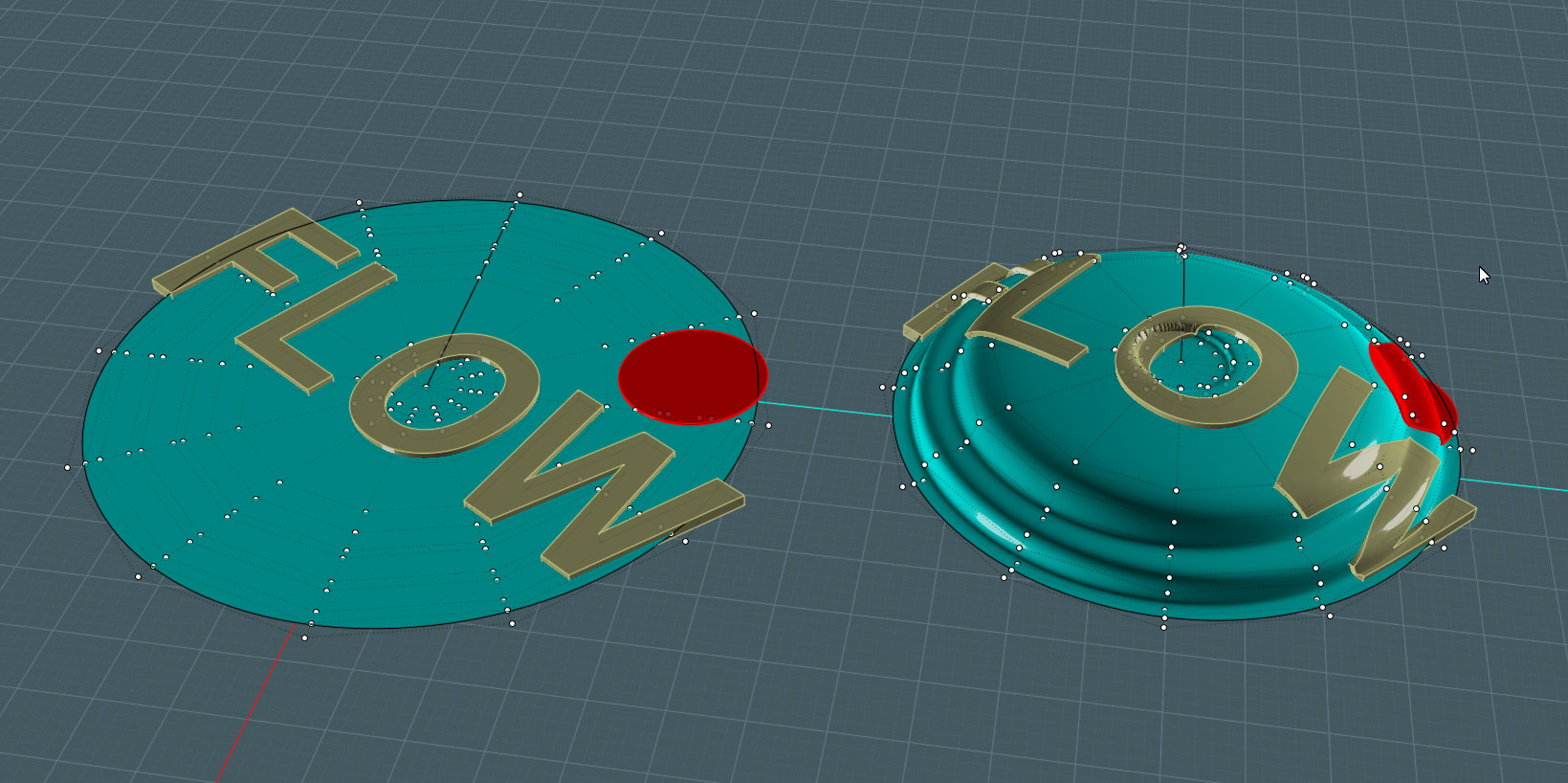I'm now starting to play around with V3 Beta's Flow command, and I tested a theory today:
- Flowing objects on a revolved surface.
Yes, usually when you think of flowing objects onto a revolved surface like a cylinder or sphere, you take the objects you want to flow and place them on a simple rectangle as the reference surface.
The result is as expected - it starts the objects at the seam line and sweeps them around like a record (axially) until it reaches the line again.
But the flow command works by matching points in the reference surface's "grid structure" to that, by percentage of the target's.
With that being said, why not consider matching a reference surface THAT IS ALREADY IN THE FORM OF THE TARGET?
Consider a simple revolved profile: You simply start off with a revolve profile made from a free-form spline.
Not just considering the control points, but how much distance is in between each control point or relative control point on the surface or curve.
- Considering the resultant U/W layout if everything was "unwrapped"
Now draw another line for the reference revolve profile, but straight and making each control point spaced out to represent the true distance along the target's profile curve.
Distance horizontally is considered, but remember if the curve moves downward or at an angle or in an arc - there is a distance there too.
Represent these distances in the spacing between control points along the reference profile.

Note: Ensure that the directions and orientations of the revolves and control profiles are in the same directions so that the Flow command will match them as you desire.
Also: Your flat profile curve for the reference revolve has to have a few of it's control points slightly offset from the straight line, or MoI will generate a planar surface with no swept control points.
Now Revolve each profile, using the same orientation. You have a revolve with a nice shape of your liking, and one that is relatively flat.
Take the flat-like reference revolve in a side view and make it "Flat" using the handle bars. It will now be perfectly flat, but retain the knots and surface information.
Now work the Flow command with the original objects on the surface or relatively spaced to the reference surface.
Since each corner of the swept surface's control cages will line up, the original objects will be translated to the characteristic shape of the target surface.

Notice how these objects are NOT sweeping in a rotational manner on the target surface!
Issues:
In this beta edition there is a problem with the flow result curves and surfaces "rippling" as the distance increases relative to some point of origin.
This is an issue that I think Michael said he was working on for the next beta release. I tried the telephone chord spiral along a path thing and got the same strange ripple that increase in severity more to one end.
You must also consider that the Flow command does not have supernatural powers and will flow well over seams, tight bends and the degenerated center point on a revolve as shown above.
But it will get you in the ball park.
Also - Flow is sloooooooooow.... eesh. My goal was to make a speaker grill with well placed holes and other detail, as such would be done if a metal sheet of grill metal was stamped into a shape.
I gave up after it sat for two hours and nothing happened... I'll take it to work and try on the faster PC.
BTW, Michael, I thought it was cute when my brother was looking at the Task Manager's Performance graphs on the work PC - while I was working with MoI, and asked me why only one of the cores was the only one working.... Well, someday. ;-)
From what we can learn from my experiment is that there may be some power in considering the original reference surface with the Flow command as well as the target.